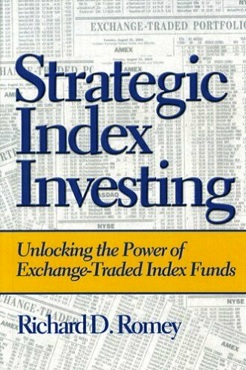
In the long, long ago, when a stock, industry, or the overall stock market fell in price, there were bargain hunting investors willing to step in and purchase shares once they fell low enough to be a good deal. Today, passive investing into index funds accounts for over 40% for all stock institutional trading – and this percentage is rising. When passive index investing grows well beyond 50%, there is a new and substantial structural risk slowly being drizzled upon the portfolio of unknowing investors.
There are several reasons why an index fund may need to sell their shares of a stock: company names are added and deleted from indexes all the time, individual or institutional investors may sell their fund shares, forcing the fund to sell stocks to free up cash, to name a few. Now, imagine a scenario where the increasing trend toward index investing grows for another 15 years. Perhaps by then 90% of all stock shares are traded by index funds. In this future scenario, a company named XYZ is removed from a major index. Then, 90% of market participants will be trying to sell their shares at the same moment but only 10% of the entire stock participants are even available to buy any of it. The price of XYZ shares must plummet and may be in a freefall because there simply isn’t enough money available to support the old stock price. Now, what about other scenarios where index fund managers decide to get out of an industry or reduce their exposure to the whole market altogether – again, we’ll have a plummeting sector, or stock market, with no index-fund manager using reason to make a purchase.
This is because passive index investing requires active money managers to generate “price discovery.” It is only this free-market price discovery that creates a fair price. If passive index investing dominates the stock market, then there is no one left to create a fair price; so what remains is price instability and unfair pricing (meaning prices far above and below a reasonable fair-market value). I won’t add algorithmic trading to this caldron today, but you can correctly guess that it does not add price stability.
If passive index investing continues to increase their market share, is there anything we can do to lower our exposure to a potential for flash crashes? Yes, there are two ways to hedge your portfolio:
- The simplest way is to move some money from stocks and bonds to cash and gold. It is a personal decision to determine a correct ratio for your portfolio, but consider holding 10%-25% of your money out of riskier stocks and bonds into cash and something non-correlated like gold and silver.
- Employ a “Risk Parity” method of portfolio construction. A common asset allocation model could be something like a portfolio made up of 70% stocks and 30% bonds. Risk Parity uses math to evaluate how much risk you have added to the portfolio with each asset component. For example, your portfolio’s components may be stocks, bonds, real estate, commodities, and cash. Perhaps your stocks add so much risk that to equalize its portion (parity), you should only have 24% of your portfolio in stocks. This method is something you can learn about online, but just consider that most money managers consider “managing risk” one of their most important priorities.
The future scenario of stocks plummeting from index fund activity 15 years from now may never occur. However, the more knowledgeable you are as an investor, the more you can prepare your portfolio from any potential risks on the horizon. If you can partially sidestep just one market downturn, you’ll be miles ahead toward your financial goals.
